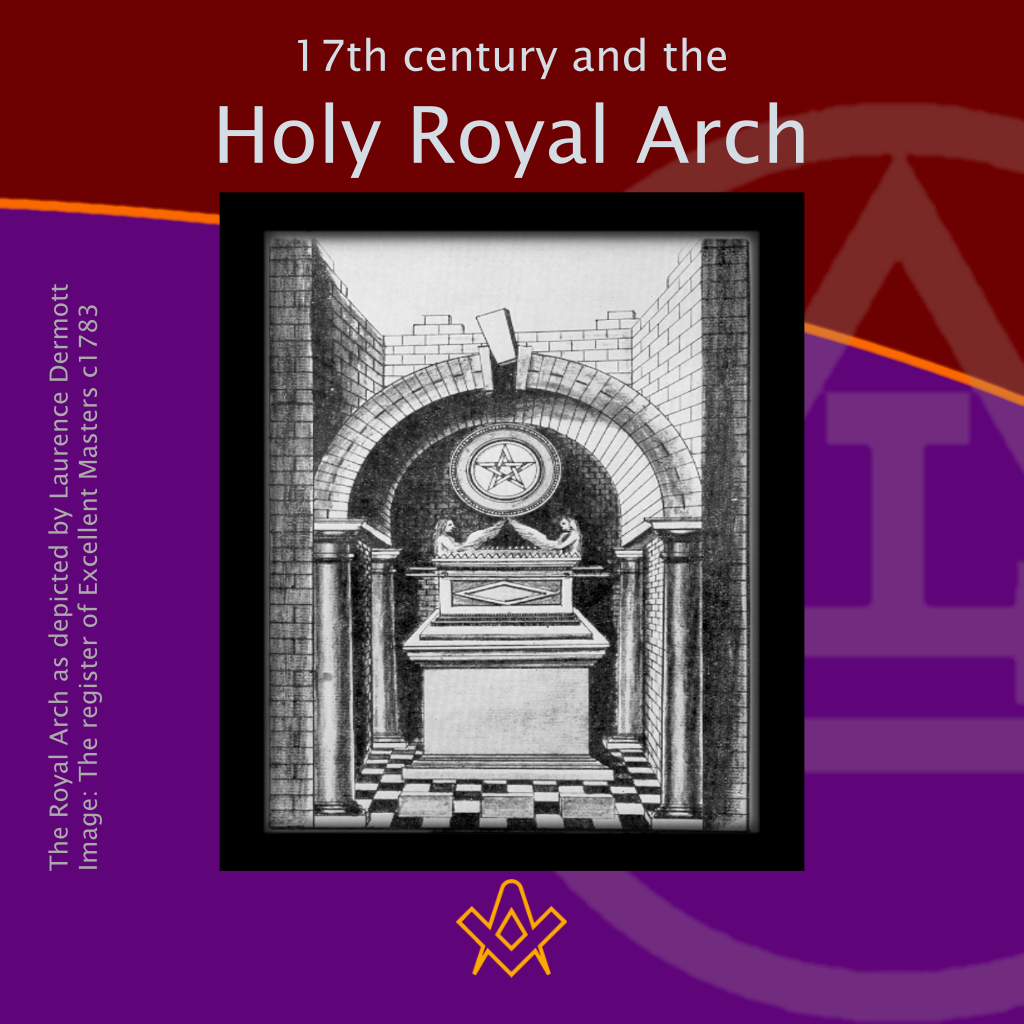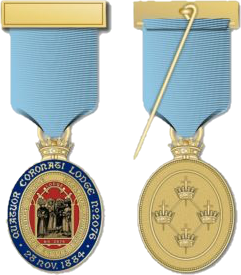17th century and the Holy Royal Arch – How the early 17th century symbolism might have influenced the ritual we practice today
This article focuses on a period of transition between a point in time when we can safely and historically identify the first formation of what could be called as the ‘Royal Arch’ and the historical events that have preceded it.
These events will be briefly described in the next paragraphs and shall cover some of the rich and unique symbolism of the early 17th century.
It is author’s hypothesis that some of the symbols of that time might be recognized in today’s Holy Royal Arch, that is being practiced under the English jurisdiction.
The earliest historical evidence of the Royal Arch
In order to link the 17th century symbolism with the Royal Arch, it is necessary to first establish historically sound evidence that allows to set up a point in time, with a considerable confidence, when the Royal Arch was mentioned for the first time.
Luckily, there are many resources from which one can pick, and which stood the test of time and critical review of many masonic historians.
I shall therefore pick the ones that are at my disposal and hope they will prove to be sufficient for accomplishing this goal.
Revd. Neville Barker Cryer describes in his book ‘What do you know about the Royal Arch?’ that:
The Royal Arch ceremony which we have now generally adopted is the result of a compromise which was decided on by a group approved by The Duke of Sussex in 1834. (…) Passwords and tokens were excluded in 1834. [1]
This obviously suggests that the ritual itself is much older and that it just suffered some modifications in the early 19th century, with a direct supervision of The Duke of Sussex.
Bernard E. Jones provides a very thorough and complex analysis of the origins of the Royal Arch in his book ‘Freemasons’ Book of the Royal Arch’, stating that the mid-eighteenth century can be indeed considered as the formative days of the Royal Arch.
As per his investigation, he presents one possibility where:
… [some] believe that long before the earliest recorded dates of Craft masonry (…) there was a legend or a series of legends from which was developed;
(a) the Hiramic Degree which was working in a few lodges certainly as early as thee 1720’s
(b) the Royal Arch Degree known to be working by the 1740’s and 1750’s; and
(c) some additional degrees. [2]
Based on this, all these degrees might have had a single source that later on developed into separate bodies with its symbols and allegories that we can recognize today.
This theory is related to the fact that Royal Arch and the Hiramic degree were separated in order to facilitate the 1813 Act of Union between the ‘Antients’ and the ‘Moderns’.
Christopher Powell in his article ‘The Hiramic Legend and the Creation of the Third Degree’ points out in the following text that there was a relationship between the Royal Arch and the Scots Master Degree:
The legend of the discovery of the Word in the hidden vault that now forms the basis of the exaltation ceremony of the Royal Arch was, in the 1730s, the centrepiece of the degree of Scots Master. [3]
The purpose of this article is not a comparison of the Royal Arch and Scots Master Degree, however, the similarities between the two and its setting around 1730s is of importance for setting up the timeline correctly.
The same author also states the irreplaceable part of Dr Desaguliers in the process of forming of the different degrees in this period of time, somewhat similar to what The Duke of Sussex did century later:
From scraps of information contained in contemporary records, the name that recurs in association with the Hiramic legend and the third degree is consistently that of Dr Desaguliers. (…)
It also shows that the third degree even in those early, pre-Prichard days concluded with ‘substituted secrets’ and not the traditional Mason Word which was revealed in the new degree of Scots Master, as the Coustos evidence referred to above makes clear.
The two new degrees of the 1720s and 1730s were thus linked right from the start and, although the present Supreme Order of the Holy Royal Arch differs from the degree of the Scots Master with its unique structure of having three co-equal Principals, the essential text as quoted above remains much as it was in the 1730s. [4]
This statement would therefore set the possible origins of the Royal Arch somewhere between 1720s and 1730s, right in the period where Dr Desaguliers was most active.
But coming back to Bernard E. Jones’ theory, which he describes as ‘A compromise Theory probably the Truest’ [5], he neither believes the Royal Arch developed from the Hiramic degree, nor he thinks it to be some kind of fabrication, since there were indeed some Royal Arch elements already acquainted with some masons and lodges.
He therefore coincides with Christopher Powell regarding the Coustos’ evidence recorded by the Portuguese Inquisition in 1743 [6], and he mentions the same example. [7]
Finally, Jones also mentions the Dumfries No. 4 MS., of the year 1710, that makes a brief reference to the ‘Royal Secret’, where the word ‘Royal’ can be understood as that of a Royal Arch:
No lodge or corum of masons shall give the Royal secret to any suddenly but upon great deliberation. [8]
Looking at this brief summary, it is therefore quite clear that, the closer we get to the beginning of the 18th century and the end of the 17th century, the scarcer historical evidence can be found about the Royal Arch, until it vanishes completely.
However, it is my strong conviction that no degree or system can start to be conferred without having at least a slight reference to earlier events, teaching and symbols, which constituted the environment for its creation and thus influenced the thinking and the imagination of its creators, whoever that persons or group of persons might have been.
A similar way of thinking can be followed when analyzing the events behind the creation of the Premiere Grand Lodge of England in 1717, that is considered by many to be the key milestone of modern speculative Freemasonry.
Here as well we can argue that, decades earlier, certain transformative events must have started to occur, which lead in the end to the transition from operative to speculative Freemasonry, an example being the ‘making’ of Elias Ashmole in 1646. [9]
In the next section of this article, I shall therefore describe some of the important events that might have led to a creation of symbols and allegories, which we can find within the Holy Royal Arch ritual.
17th century turmoil and the European religious wars
The 17th century witnessed one of the bloodiest conflicts of the European history, that is the Thirty Years War (1618 – 1648), which was an outcome of religious and political tensions at that time.
It is also important to understand that this century was a breeding ground for the Age of Enlightenment, an age where protosciences started to separate from each other and the overall spiritual zeal started to vanish in favor of new scientific advances.
However, we can observe two important parts of the 17th century, one being before the war and the other after the war, even though we can observe some slight differences within the Enlightenment movement that are specific to some European countries.
The pre-1618 Europe could be characterized as a period where Protestants and Catholics were scheming for control and power across the whole continent.
There was the Catholic church on one hand, with a strong support from Spain and Vienna under the House of Habsburg, and various Protestant groups on the other hand, such as Lutherans, Calvinists, Anglicans, Moravian Brethren and others, under the protection of English rulers (James VI, Charles I), Swedish rulers (Gustavus Adolphus) and various Protestant princes of the Holy Roman Empire territories (Christian of Anhalt, Frederick V).
The Holy Roman Empire itself was not a unified state, rather it consisted of many different principalities and duchies with voting rights for the election of the emperor.
One part of the empire, the lands of the Bohemian crown, which were inherited by the Habsburgs, had a strong Protestant legacy due to John Huss’ preaching (inspired by John Wycliffe) during the 15th century.
His execution in 1415 initiated the Protestant Hussite Wars, but even after that, the Habsburgs were still officially the Catholic rulers of the land.
The Protestants in Bohemia were tolerated by Rudolph II of the house of Habsburg, who established his court in Prague, where he created a center for learning and culture, alchemy and astrology.
John Dee, Heinrich Khunrath, Johannes Kepler, Edward Kelley, Tycho de Brahe, Michael Maier, and many others traveled to Prague to work for the emperor.
However, after the death of Rudolph, the Protestant tolerance was retracted, which introduced more tensions that resulted in the Second Defenestration of Prague and Protestant revolts against the emperor, effectively initiating the Thirty Years War. [10]
But before the start of the war, strategic alliances were made, and political-religious symbology started to appear everywhere to support them.
Suddenly, many learned men started to euphorically announce a new era, where the Protestant countries were the real Israelites, with Jerusalem being their destiny.
This all was further strengthened by ‘God’s sign from the above’, such as the case of Kepler’s Supernova of 1604 [11] that was observed by a naked eye.
The most important strategic alliance made at that time was without a doubt the marriage (1613) between Frederick V of the Palatinate, the official head of the Protestant Union, and Elizabeth Stuart, the daughter of James VI.
The wedding was organized by none other than Sir Francis Bacon himself. [12]
After the Second Defenestration of Prague mentioned above, Frederick V and Elizabeth Stuart were crowned King and Queen of Bohemia, which challenged Ferdinand II, Holy Roman Emperor, and led to a war.
It is precisely the symbolism that appeared in unprecedented measures during these events that can be found to some extent within the Holy Royal Arch ritual today, a hypothesis which I will try to prove in the following section.
17th century symbolism and its influence within the Royal Arch
Bernard E. Jones states in his book, in the section called ‘The Ceremonial immediately preceding the 1835 Revisions’ that the Royal Arch Chapter was ruled by three Principal Officers, Zerubbabel as Prince, Haggai as Prophet and Joshua as High Priest, the three of them representing the keystones of the arch.
The opening ceremony back then was different from what we do today, however:
Essentially, the opening by the Principals was much as it is to-day, but in many chapters the esoteric portion was worked in a separate room by the three Principal Officers, who then entered the chapter, and, in all likelihood, worked a short completion of the ceremony there. [13]
As those who know the Holy Royal Arch ritual might remember, the three Principals use a Bible during the opening ceremony and hold it in a very peculiar position.
The etching on the Fig. 1 below is called ‘Frederick V, King of Bohemia and Elector Palatine; Princess Elizabeth, Queen of Bohemia and Electress Palatine’ and is from 1619, made by an unknown artist.
I have amplified the detail of the three men who can be seen on the background behind Frederick V and Elizabeth. We can observe a beautiful symbology:
On the day of the coronation a commemorative print was published.
It shows Frederick and Elizabeth as crowned king and queen of Bohemia. In the background, Reformers and peace have triumphed over Counter-Reformers and war.
Four lions represent the alliances on which the new king and queen of Bohemia can count.
The lion was Frederick’s own heraldic animal, and the lion on the left is the lion of the Palatinate, holding an electoral crown.
Then come the double-tailed lion of Bohemia, the British lion with his sword, and the lion of the Netherlands. (…)
Sunlike rays from the Divine Name, in Hebrew, are indeed falling on Frederick and Elizabeth, and this is the red dawn of a new morning.
The verses lay particular stress on how this dawn depends on the new Queen.
Wyclif came from England, they explain, from whom Huss took his teaching, alluding to Wyclif’s influence in reformation; and now a queen comes to us from England. [14]
We can therefore see that those three men, those ‘three principals’ of the Protestant faith are Wycliffe, Huss, and the third one in the middle, even though not mentioned in the text above, but thanks to his appearance nevertheless very well recognizable, is Luther.
They all are standing together, in a very peculiar position, not that different from the Holy Royal Arch ceremony, laying their hands on a Bible, meanwhile the ineffable name shines from above.
I haven’t managed to stumble across any similar piece of art where three men of such an importance would be standing in this kind of position, hence I consider it to be quite unique and significant.
What I would like to stress out here is the authorship of this etching. As per the National Portrait Gallery, the author is unknown.
However, an artist called Jacques Callot (1592 – 1635, Nancy) made himself famous for his advanced etching technique, that got materialized in a set of prints called ‘Les Grandes Misères de la guerre’ (The Great Miseries of War).
Callot’s portrait can be seen, as captured by Lucas Emil Vorsterman engraving after Sir Anthony van Dyck’s portrait in the Fig. 2 below.
I would like to bring the attention to the tools laid down intentionally on the table, among which can be found a square and compasses in close proximity.
Callot is important because he was the author of Charles de Lorme’s portrait, that can be seen on Fig. 3, which also caught Bernard E. Jones’ attention when analyzing the Royal Arch jewel:
What might appear to be a prefigurement of the R.A. jewel was produced in 1630 (136 years earlier than the Chart of Compact) when Jacob (Jacques) Callot, a famous French etcher, engraved his portrait of a well-known physician and made it the centre-piece of an hexalpha.
He inserted Greek letters on the arms of the geometrical device and surrounded it with a circle, actually the serpent devouring its own tail (see p. 230). [16]
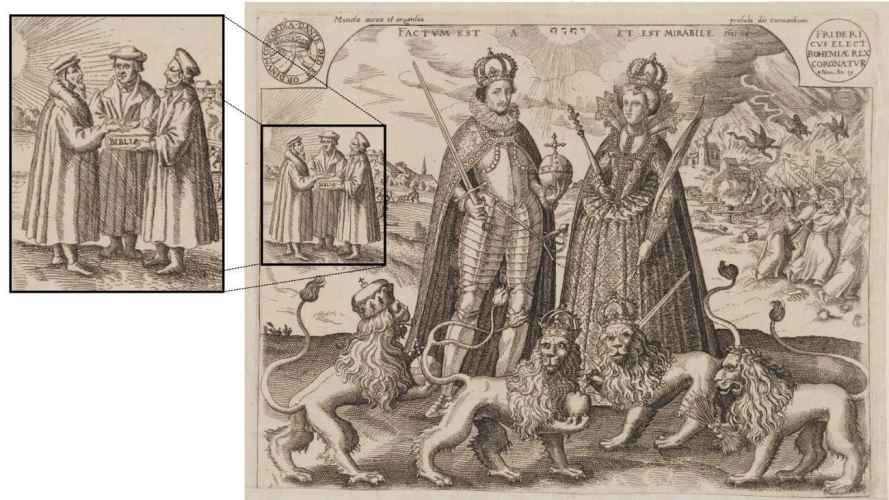
Fig. 1 – Frederick V, King of Bohemia and Elector Palatine; Princess Elizabeth, Queen of Bohemia and Electress Palatine (1619). [15]
Image adapted by the author.
IMAGE LINKED: wikimedia Attribution 4.0 International (CC BY 4.0)
Another symbol that is to be found within the very core of the Holy Royal Arch Chapter, and especially the exaltation ceremony, is the mysterious name that the candidate has to discover, and which comprises of a set of characters.
As per Arturo de Hoyos and his article ‘Mystery of the Royal Arch Word’ [18], there is a high probability that these characters were mentioned in Heinrich Khunrath’s work called ‘Amphitheatrum Sapientiae Aeternae’ (Amphitheater of Eternal Wisdom).
There is a difference in one letter, specifically the N (nun) instead of L (lamed), however, one might speculate that, due to their fairly similar calligraphical structure, these two letters might have been involuntarily interchanged.
One might also argue that not all authors at that time were fluent in Hebrew, hence the possibility for confusion.
These symbols yet again show, with a considerable level of confidence, that, in this case late 16th century symbology, penetrated into the much later design of the Royal Arch as we know it today.
Even though Arturo de Hoyos’ article presents a very interesting analysis on the possible interpretations of the N / L letters in the triangle and their relationship with a philosophical stone, I shall not delve any further into that matter here, since we could only speculate.
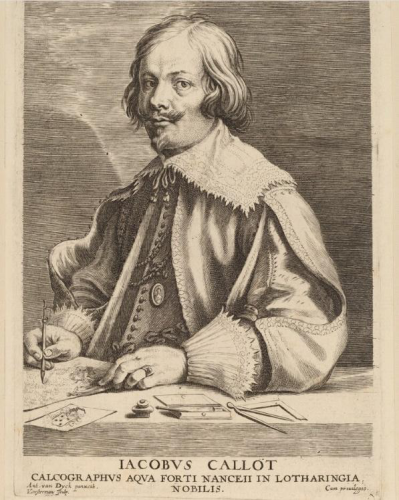
Fig. 2 – Jacques Callot by Lucas Emil Vorsterman after Sir Anthony van Dyck [17]
IMAGE LINKED: wikimedia Attribution 4.0 International (CC BY 4.0)
However, what should be introduced at this point is the inevitable Christian, and shall I also add trinitarian, influence that is mentioned by B.E. Jones in his book under the section ‘The Christian Character of the Early Ritual’:
It may come as a surprise to many masons to learn that the Royal Arch at its inception and for half a century or more had a decidedly Christian character.
There is difficulty in offering any satisfactory explanation of the way in which a dramatized rendering of certain Old Testament incidents came to include distinctly New Testament teaching, a teaching that remained in the ritual until well into the nineteenth century and echoes or reflections of which persist to this day – some of them where least suspected by the uninformed. (…)
In perhaps a majority of the Craft lodges in which the R.A. was nurtured the ritual had Christian characteristics. (…)
Thus the R.A. story is a blend of two stories, one wholly Jewish and dating back to some centuries before Christ, and the other largely Christian and recorded some few centuries after Christ. [21]
I would like to argue in this article that symbols of the early 17th century did, either directly or indirectly, influence the building blocks of the Royal Arch ritual that ‘crystalized’ some 100 years later.
The symbols that I have described above span across a very well-defined period of time (1609, 1619, 1630) of some 20 years; some of them being of Protestant Christian kind, especially when looking at the etching showing three Protestant leaders.
This fits very nicely into the early Christian character of the Royal Arch ritual, as described above by B. E. Jones, even though, this characteristic was left out on purpose later on:
The Christian content of early symbolic masonry is a subject upon which much has been written.
Anderson’s Constitutions of 1723 and 1738 did in effect de-Christianize the Craft ritual (…)
Whereas, as already explained, the Old Charges had a decidedly Christian character, the new Constitutions no longer insisted that freemasons should be loyal to Holy Church or look upon Christ as the Savior of mankind. [24]
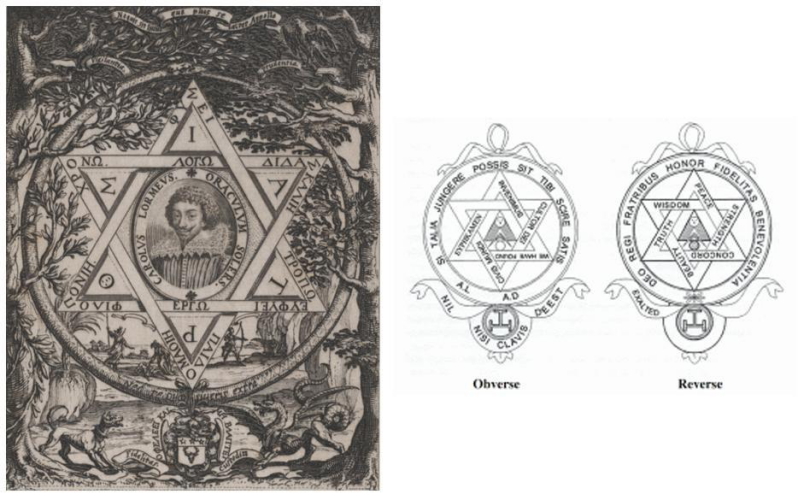
Fig. 3 – Left: Charle de Lorme’s portrait by Callot 19, right: Holy Royal Arch jewel. [20]
Image adapted by the author.
IMAGE LINKED: wikimedia Attribution 4.0 International (CC BY 4.0)
For those who argue that these are just a few unrelated symbols, which do not represent a sufficient amount of evidence, I would like to add a few more references that I’ve found when studying some of the 17th century symbology.
The following text, ‘The Chemical Wedding of Christian Rosencreutz’ (1619), presents some interesting symbols, which shall surely be familiar to all Holy Royal Arch Companions:
Suddenly a fearful tempest arose, and in the midst of it appeared a glorious vision whose garments were sky-coloured, bespangled with stars. In her right hand she bore a golden trumpet whereon a Name was engraved which the narrator (Christian Rosencreutz) could read but dared not reveal. [25]
I argue that, even though the text mentions a trumpet and not a plaque, the resemblance to a part within the Holy Royal Arch ritual exaltation ceremony, where the Candidate encounters certain mystical characters, which he doesn’t dare to reveal, is quite astonishing.
There are more symbols within the same text though:
Christian Rosencreutz hastened to accept the invitation to the Royal Wedding. He put on a white linen coat, bound a blood-red ribbon crossways over his shoulder, and ‘in my hat I stuck four red roses’. [26]
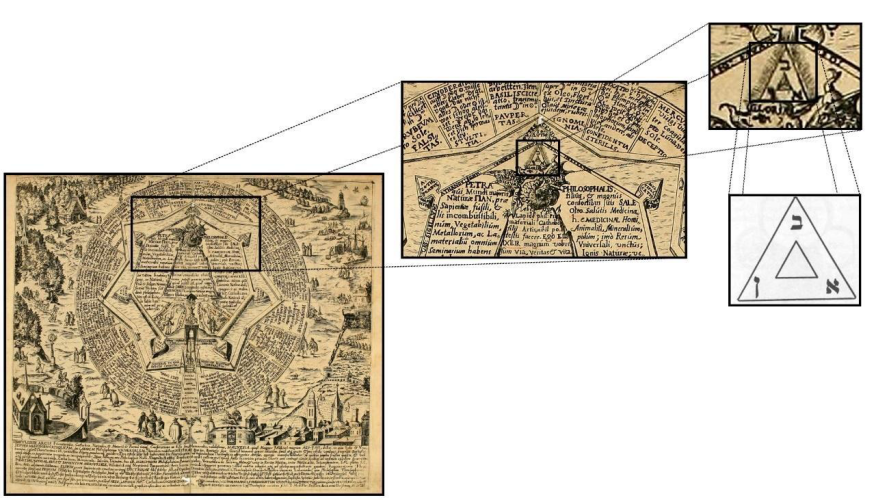
Fig. 4 – Heinrich Khunrath’s Ampthitheater of Eternal Wisdom (1609) [22] enriched with a detail of the triangle from Arturo de Hoyos’ article. [23]
Image adapted by the author.
IMAGE LINKED: wikimedia Attribution 4.0 International (CC BY 4.0)
Here we can observe certain similarities, even though not precisely the same, to the white garments that are reserved for the Candidate of an exaltation, as well as a ribbon or a sash that is put across the shoulder in the standard Holy Royal Arch regalia, though this also includes a blue color, not just red.
The text continues:
Arrived at a royal portal on a hill, the porter demanded his Letter of Invitation which, fortunately, he had not forgotten to bring with him, and asked who he was.
He replied that he was ‘a brother of the Red Rosy Cross’.
At the next gate, a roaring Lion was chained, but the porter drove him back and the hero passed in. [27]
Here is mentioned a royal portal (where a royal wedding is taking place), where we can speculate on some possible relations to the Royal Arch.
Also, in the story, the candidate is required to show his Letter of Invitation that, again as a speculation, can be interpreted as a password that is also required for the entrance of a Candidate during an exaltation ceremony.
The text goes on as the wedding guests are entertained by a comedy:
The extremely simple plot of the comedy was punctuated by a display of Biblical emblems, ‘the four beasts of Daniel’, or ‘Nebuchadnezzar’s image’ were brought in, suggesting that the audience was expected to see in it allusions to prophecy. [28]
Nebuchadnezzar is also mentioned during the exaltation ceremony as one of the key figures responsible for the events that a Candidate shall observe. The following text captures a rather morbid scene:
Afterwards, all returned to the castle where, later, a strange episode took place, described in impressive detail.
Amidst silence and deep mourning, six coffins were brought in. Six persons were beheaded and put into the coffins. Later, on the following day, the corpses were resuscitated. [29]
I wish not to reveal any secrets here, but from this text we can observe certain similarities to certain Signs that are presented to the newly exalted Candidate by one of the Principals.
The following text describes the underground parts of the castle where the wedding took place:
On the Fifth Day, the narrator was exploring the underground parts of the castle, when he came to a door on which was a mysterious inscription.
When it opened, a vault was disclosed, into which the light of the sun could not penetrate; it was lighted by huge carbuncles.
In the midst of it was a sepulchre adorned with many strange images and inscriptions. [30]
This part of the text is by far the closest resemblance of the ‘cryptic’ parts of the exaltation ceremony, especially when taking into account a series of words such as ‘vault’, ‘light of the sun could not penetrate’ and ‘mysterious inscription’ within such a close proximity.
I agree that this quote is from Yates’ book and does not represent the exact sentences contained within the original work, however, even a proximity within a few paragraphs of the same chapter represents interesting evidence.
One last part of the document shows yet another resemblance:
On the Seventh and Last Day, the party gathered upon the shore preparing to leave in their twelve ships which flew flags showing the signs of the zodiac. [31]
The exaltation ceremony does indeed include certain flags that are twelve as well and that, even though as a mere speculation, are interpreted by many Companions as of zodiacal nature.
Within one single text that was published in 1619, the same year as the abovementioned etching that resembles the position of the Three Principals of the Holy Royal Arch, we can see at least seven different symbols that, even though not completely, coincide with many parts of the exaltation ceremony.
As mentioned above, one can only argue whether these symbols had any direct influence on the early Royal Arch ritual or not, but I think that sufficient evidence has been presented to at least consider an indirect influence.
Historical events and their influence on Masonic rituals
In this section I would like to present a theory, that is held also by some other Masonic scholars, which argues that some parts of the Craft rituals might have been strongly influenced by the events that were taking place during the ritual development.
I firmly believe that something similar can be observed also within the Holy Royal Arch ritual, when looking at the accounts of the 17th century and that a parallel can be drawn that follows the same pattern.
A Spanish Masonic investigator, W. Bro. Alberto Moreno Moreno, published on his website ‘Masonería Antigua’ a paper that was presented in a Lodge of Investigation Séneca No. 179 in Seville on 28th October 2021.
The topic of the paper was ‘How Joshua and Jephthah appeared in the Fellow Craft degree (and in the Händel’s oratory)’ and can be consulted on his website in Spanish. [32]
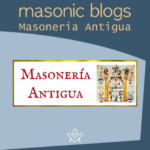
Masonic Blogs – Masoneria Antigua
Masoneria Antigua – A Spanish blog dedicated to ancient Masonry, its origins, rituals and meaning, as well as Freemasonry in general, hosted by Masonic author and translator Alberto Moreno Moreno.
more….
The author argues that, even though all Craft Masons do recognize these historical figures directly from the ritual, there is no evidence of them neither within the Old Charges or any early masonic catechisms, rendering them completely inexistent for the operative Masons.
They appear for the first time during the speculative period when the traditional two-degree system was transformed into a three-degree system around 1725-1730.
Moreno then explains that Jephthah appeared for the first time in a divulgation of a ritual in ‘Le maçon démasqué’, written in French, but published in London in 1751.
Moreno states his surprise, since the composer Händel composed his final oratory in 1751 called Jephthah and, before that, in 1747, another one called Joshua.
This caused him to investigate deeper the events of that time, which brought him to the period of Jacobite uprisings, especially the one of 1745 and the Battle of Culloden, which ended the rebellion.
It was precisely at that time that Händel was composing his works with a clear objective of exalting the king.
Moreno argues that the English society of that time was convinced that the Protestant faith assured them the special attention from God and that they were bound to be tried by periods of suffering.
In their eyes, they constituted the new Israel, which is confirmed by Linda Colley ́s book called ‘Britons, forging the nation 1707-1837’:
In the eighteenth and nineteenth centuries, though, Britons held to this system of beliefs both devoutly and consciously, and drew on it for courage and dignity in the face of recurrent wars and threatened invasions.
Like the Swedes, in their wars against Poland and the Catholic German states in the sixteenth and seventeenth centuries, and like the Dutch in their struggle for independence against Catholic Spain, Protestant Britons believed they were in God’s special care.
They knew that they were bound to be regularly tested by periods of extreme sin and suffering, and they took it for granted that struggle – especially struggle with those who were not Protestants – was their birthright.
But they also believed that under Providence they would secure deliverance and achieve distinction.
In short, they believed, many of them, that their land was nothing less than another and a better Israel. [33]
Indeed, we can even observe military events being directly influenced by this kind of strong conviction of being the ‘people chosen by God’:
Another favourite parallel, among clergymen from all parts of Great Britain, was that between the Jacobites (or whoever the enemy happened to be at that time) and the Assyrians and their allies.
Adam Fergusson sent the King’s Highland regiments off to do battle with what was left of the Jacobite army in December 1745, with a Gaelic sermon based on Joab’s speech to the army of Israel in advance of its battle with the Ammonites. (…)
Alexander Webster, the staunchly pro-government minister of Tolbooth church in Edinburgh, dedicated his sermons on Culloden to those filled with ‘concern for the welfare of our Jerusalem, and zeal for the British Israel’.
While another clergyman, an Englishman this time, trumpeted the cosmic significance of the Seven Years War in the title of his sermon in celebration of the Peace of Paris in 1763: The triumph of Israelites over Moabites, or Protestants over Papists.
There are innumerable other examples of this kind of clerical language. [34]
Coming back to Moreno, he argues that it would not be wise to reduce these two characters and their involvement in the Craft ritual only to the political influences of that time, obviously.
He closes his theory with a statement that the brethren of that time wanted to build upon an example of good versus evil, as well as on the complications of living on a continent with peoples of different faiths, which would allegorically most likely represent the Catholics as the worshipers of Baal, etc.
A similar pattern of thinking can be observed when analyzing the thoughts of yet another masonic scholar, Bro. Kevin Gest, an author of ‘Freemasonry Decoded’.
In his talk for ‘Legere Aude 09’ organized in collaboration with Lewis Masonic, Gest argues that the allegory of the Fellow Craft degree can be seen as an interpretation of historical events that occurred during early 18th century.
These are exposed below in a form of author’s notes from the slides of the Legere Aude online lecture:
• Design and construction of Solomon’s Temple [=] Design of St. Paul’s Cathedral (topped out 1708) based on common themes with Solomon’s Temple.
• War (Jephthah – Gilalites v Ephraimites; Battle by the River Jordan – 42,000 Ephraimites killed. Judges [=] Wars of Spanish Succession – Battle of Blenheim (1714), same era as St. Paul’s 42,000 French killed.
• Brethren arrive at the foot of a winding staircase to receive their wages, access inhibited. At the top they enter the middle chamber; certain Hebrew characters. [=] Completion (1710) and decoration of St. Paul’s Cathedral; access and vista from the Whispering gallery. [35]
Conclusion
We can therefore see that it would not be that disproportionate to try and draw a similar parallel to the events of the early 17th century and the symbolism that it produced, which could, 100 years later, be included in the Holy Royal Arch ritual.
In the end, as stated in the quote by Linda Colley above, the Protestants of that time in Germany and England were indeed convinced that they were the people chosen by God, the real Israelites, and that their union, materialized by the wedding of Frederick V of the Palatinate, the official head of the Protestant Union, and Elizabeth Stuart, the daughter of James VI, was a sign from God.
Therefore, it is also not hard to believe that Luther, Wyclif and Huss, shown in the background behind Frederick and Elizabeth, could be also interpreted as Z., H. and J., in order words, the Three Principals of the Holy Royal Arch.
The text of The Chemical Wedding of Christian Rosencreutz was a third text in a series of three manifestos –
Fama Fraternitatis ‘The Fame of the Brotherhood of RC’ (1614),
Confessio Fraternitatis ‘The Confession of the Brotherhood of RC’ (1615) and
Chymische Hochzeit Christiani Rosencreutz anno 1459 ‘The Chemical Wedding of Christian Rosencreutz’ (1617).
All three works were clearly having the same goal – the exaltation of the Protestant union between England and the German Palatinate – that would alter the fragile balance between the Protestants and the Catholics within the Holy Roman Empire.
With the start of the Thirty Years War, and the influx of German Protestant refugees into England, I believe these events and the symbolism it produced as a collateral, were transported into England, and had to have a strong impact upon whatever the state the English ritualistic environment encountered itself in at that time, hence resulting into the first hints of what would be known as a Royal Arch Masonry few decades later.
I recognize that many of these statements might be considered as a pure speculation on my side, however, taking into account the quantity of symbols with a considerable Royal Arch similarity and also the way of thinking of the Protestant environment at that time, I believe that a certain connection can be made.
This connection, however, is not a solid one, since it doesn’t show any kind of factual written ritualistic evidence clearly stating a possible inspiration of the authors of the rituals in these symbols.
For that, I invite any future masonic scholars and historians to investigate this area of interest, and I can only hope that we will see in the future some newly discovered documents that would either confirm or reject this theory of mine.
– Thank you.
Footnotes
References
Notes:
[1] Cryer, Revd N. B. 2002. What do you know about the Royal Arch? Shepperton: Lewis Masonic., 33
[2] Jones, B. E. 1957. Freemasons’ Book of the Royal Arch. London: George G. Harrap & Co. Ltd., 19
[3] Powell, Ch. 2021. The Hiramic Legend and the Creation of the Third Degree. AQC 134, 78
[4] Powell, The Hiramic Legend, 92-94
[5] Jones, Book of the Royal Arch, 25
[6] Powell, The Hiramic Legend, 79
[7] Jones, Book of the Royal Arch, 22
[8] Jones, Book of the Royal Arch, 36
[9] Jones, Book of the Royal Arch, 19
[10] Randák, J. 2011. Dějiny českých zemí. Praha: Knižní klub.
[11] Boner, P. J. 2020. Kepler’s New Star (1604) Context and Controversy. Edited by Patrick J. Boner. Vol. 31. Brill. doi:https://doi.org/10.1163/9789004437272_002.
[12] Yates, F. A. 1972. The Rosicrucian Enlightenment. New York: Routledge & Kegan Paul., 8
[13] Jones, Book of the Royal Arch, 166
[14] Yates, The Rosicrucian Enlightenment, 30-32
[15] Gallery, National Portrait. 1619. National Portrait Gallery – NPG D9482. Accessed 03 11, 2022.
[16] Jones, Book of the Royal Arch, 266 https://www.npg.org.uk/collections/search/portrait/mw15591/Frederick-V-King-of-Bohemia-and -Elector-Palatine-Princess-Elizabeth-Queen-of-Bohemia-and-Electress-Palatine.
[17] Van Dyck, Sir A. National Gallery of Art – Jacques Callot. Accessed 03 11, 2022. https://www.nga.gov/collection/art-object-page.10786.html.
[18] Hoyos, A. de. 1993. The Mystery of the Royal Arch Word – Scottish Rite Research Society. Accessed 03 11, 2022. http://www.freemasons-freemasonry.com/royal_arch_word.html.
[19] Callot, J. 1630. Metmuseum – Portrait of Charles Delorme. Accessed 03 11, 2022. https://www.metmuseum.org/art/collection/search/419447.
[20] Jones, Book of the Royal Arch, 266
[21] Jones, Book of the Royal Arch, 27-28
[22] Ojeda, C. 2012. ALQUIMIA Y MAGIA DE HEINRICH KHUNRATH. 08 05. Accessed 03 11, 2022. http://www.odisea2008.com/2012/08/alquimia-y-magia-de-heinrich-khunrath.html.
[23] Hoyos, The Mystery of the Royal Arch Word
[24] Jones, Book of the Royal Arch, 28
[25] Yates, The Rosicrucian Enlightenment, 86
[26] Yates, The Rosicrucian Enlightenment, 88
[27] Yates, The Rosicrucian Enlightenment, 88
[28] Yates, The Rosicrucian Enlightenment, 90
[29] Yates, The Rosicrucian Enlightenment, 90
[30] Yates, The Rosicrucian Enlightenment, 90
[31] Yates, The Rosicrucian Enlightenment, 90
[32] Moreno, A. M. 2021. Masonería Antigua. 11. Accessed 03 18, 2022. https://masoneriaantigua.blogspot.com/2021/11/como-aparecieron-josue-y-jefte-en-el.html.
[33] Colley, L. 1992. Britons, forging the nation 1707-1837. London: Pimlico., 29-30
[34] Colley, Britons, 30-31
[35] Gest, K. 2022. YouTube – Legere Aude 09 – Freemasonry Decoded – Rebuilding the Royal Arch by Bro. Kevin Gest. 03 08. Accessed 03 18, 2022. https://youtu.be/cFY2pStppyU?t=2822.
Article by: Filip A. J.

Filip was initiated into Freemasonry in 2016 and raised a Master Mason in 2019. He is a member of the Internet Lodge No. 9659 in the Province of East Lancashire under the United Grand Lodge of England.
He is also a member of Semper Fidelis Lodge No. 150 and Jovellanos Lodge No. 138, both working under the Grand Lodge of Spain. He was born in Prague, Czech Republic, but currently he lives in Oviedo, Asturias in northern Spain.
He enjoys studying the 17th century Rosicrucian movement and related topics.
In order to expand his knowledge, Filip has also joined other Masonic Orders and Degrees such as the Order of Mark Master Masons, the Holy Royal Arch, the Royal Ark Mariners, Knights Templar, the Order of Secret Monitor and the Order of Allied Masonic Degrees.
However, above all, he enjoys being member of the Societas Rosicruciana in Lusitania (Portugal), where he has received the honour of being named a Director of Technologies.
Last but not least, he is also a member of the Quatuor Coronati Correspondence Circle and has been named a QC Local Secretary for norther Spain. He has also published an article on John Amos Comenius in the magazine Fraternitas (SRIL) about his involvement in the Rosicrucian movement.
Filip is also collaborating closely with Fraternitas as a translator from Portuguese to Spanish.
Recent Articles: masonic history
 Protestantism and Masonic Influence in Brazil Discover the untold story of how Freemasons helped Southern Americans immigrate to Brazil post-Civil War, fostering economic and educational growth in Santa Bárbara d’Oeste and Americana. Learn about their pivotal role in establishing Protestant churches and ensuring the secularity of the Brazilian State amidst a Catholic-dominated society. |
 Explore the proper use of the sacred word in Brazilian Freemasonry through an analysis of Masonic literature and Bible translations. Uncover the errors in pronunciation and the need for corrections to maintain liturgical coherence in rituals. Discover insights on Masonry, rituals, and the Hebrew word Boaz. |
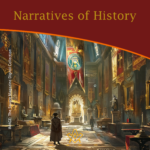 Narratives of History |
 A Very Royal Sesquicentenary |
 Unveiling the Enigma: Discover the Royal Society's Legacy and its Impact on Science. Delve into the fascinating history of the Royal Society, the prestigious UK academy shaping scientific progress since 1660. Explore its pivotal role in advancing knowledge, fostering collaboration, and unlocking the secrets of the universe. Prepare to be amazed! |
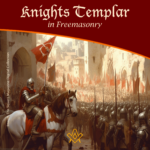 Knights Templar in Freemasonry Uncover the Mysteries of the Knights Templar in Freemasonry! Delve into the intriguing world where chivalry and symbolism intertwine. Discover the captivating rituals and ancient secrets behind the Knights Templar Masonic Orders. Explore the historical connection and delve into the enigmatic narratives that continue to fascinate enthusiasts today. Unveil the hidden truths now! |
 The Royal Arch stands as the rainbow of promise in the Ritual; it stands as the promise of the resurrection; of that which was lost and that it shall be recovered. The question arises as to whether the Master's Word was originally communicated in the Third Degree? On this point there is some diversity of opinion. Originally published in 1915, this insight into the Fourth Degree – the Holy Royal Arch – is as relevant today as it was over 100 years ago. |
 Unveiling the Mysteries of Druidism: Discover the Intriguing Connection with Freemasonry. Explore the ancient spiritual practice of Druidism and its fascinating ties to the enigmatic world of Freemasonry. Delve into the shared symbolism and rituals that have captivated minds for centuries. Unlock the secrets of these intertwined traditions today! |
 Uncover the legacy of freestone masons and their pivotal role in crafting medieval cathedrals. Discover the artistry behind their techniques, the hierarchy within their craft, and the enduring impact of their intricate carvings. A deep dive into the world of these master craftsmen awaits you! |
 Unearth the intriguing journey from Vincha Culture to Freemasonry. Discover how ancient building methods intertwine with modern Masonic philosophies. This exploration will shed light on the fascinating link between the Serbian term "shestarenye" and the symbolic significance of the compass in Freemasonry. |
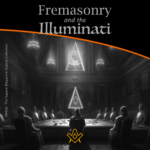 Freemasonry and the Illuminati Unravel the enigmatic world of Freemasonry and the Illuminati in our latest exposé. Dive into centuries-old mysteries, debunk conspiracy theories, and discover the truth behind these elusive societies. Are they puppet masters or mere myths? Join us as we dissect history and fact from fiction. |
 The Île des Templiers, or “Island of the Templars” lies within a leafy park in Paris. The execution site of Jacques du Molay, the last Grand Master of the Knights’ Templar bears a plaque with the epitaph ‘A cet endroit / Jacques de Molay / Dernier grand maître / de l'ordre du temple / a été brûlé le 18 Mars 1314’ (‘In this location / Jacques de Molay / Last grand master / of the order of the temple / was burned on 18 March 1314’) |
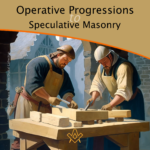 Operative Progressions to Speculative Masonry Both Operative and Speculative Masonry are an important part of the modern fraternity of Freemasonry, which combines elements of both traditions. Today, Freemasonry is a fraternity that is open to men of good character, who are interested in personal development and in making a positive contribution to their communities. |
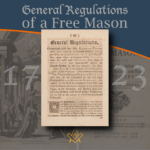 General Regulations of a Free Mason, 1723 General Regulations of a Free Mason as contained in Anderson's Constitutions of the Freemasons, published 1723. the Regulations are of great historical interest. Compiled by George Payne, the second Grand Master of the Premier Grand Lodge of England, they were printed in 1722/3, thus published just over five years after the formation of the Grand Lodge 1717. |
 The Genesis of the 1723 Book of Constitutions 2023, marks the three hundredth anniversary of the publication of the first printed Book of Constitutions of the Grand Lodge formally established in London two years previously. This is an anniversary whose significance extends beyond freemasonry. A paper by Andrew Prescott |
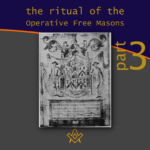 The Ritual of the Operative Free Masons - P3 Existing Operative Free Masons. The ritual I am about to refer, is that of "The Worshipful Society of Free Masons, Rough Masons, Wallers, Slaters, Paviors, Plaisterers, and Bricklayers." By Thomas Carr, M.D., P. M. Honorary Member of the Guild of Operative Free Masons |
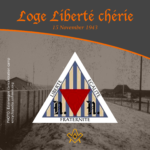 Liberté chérie was a Masonic Lodge founded in 1943 by Belgian Resistance fighters and other political prisoners at Esterwegen concentration camp. It was one of the few lodges of Freemasons founded within a Nazi concentration camp during the Second World War. |
 The Ritual of the Operative Free Masons - P2 If anyone doubts the fact that the formation of Speculative Free Masonry was due to and based upon Operative Free Masonry, it is quite easy to convince him of his error if he will only study the first Book of Constitutions. By Thomas Carr, M.D., P. M. Honorary Member of the Guild of Operative Free Masons |
 In 1881, Freemasonry rose from the ashes of a fire in the mining town of Kokomo, Summit County, Colorado. Corinthian Lodge No. 42, along with Kokomo, no longer exists but it holds the record of having been – at an elevation of 10,618 feet – the highest Masonic Lodge in the USA. |
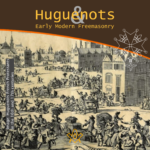 The Huguenots and Early Modern Freemasonry The Huguenots influence in the development of early modern Freemasonry at the time of the formation of the Grand Lodge in London around 1717 / 1723. |
 November is a month of reflection – perhaps due to the fact that we are getting close to the years' end – but also because Remembrance / Armistice Day (11 November) is a significant date in most countries' diaries. |
 Speculative Freemasonry, as practise by Grand Lodge of England, was officially born just over three hundred years ago, is today an international organisation, counting over six million members. It has been subjected to persecution, suppression, and abolition throughout its history. In its infancy, only a couple of decades after its official birth, it had already become a target. |
 The Ritual of the Operative Free Masons - P1 The original paper was written, first, to prove that Speculative Free Masonry was derived from Operative Free Masonry; second, to give some account of the Operative Free Masons, of their Ritual, and of their customs. By Thomas Carr, M.D., P. M. Honorary Member of the Guild of Operative Free Masons |
 American Fraternalism in the 19th and Early 20th Centuries The late 19th and early 20th centuries in the United States has been called the "Golden Age of Fraternalism." How did this come about and why was the idea of joining a fraternal organization so popular? We will explore this question and examine the regalia used by many fraternal organizations in this period. |
 Societas Draconistarum, meaning "Society of the Dragonists"– was a chivalric Order for selected nobility, founded in 1408 by Sigismund von Luxembourg, who through marriage became the King of Hungary (1387–1437) and later Holy Roman Emperor. The Order was fashioned after the military orders of the Crusades, requiring its initiates to defend the cross and fight the enemies of Christianity, in particular the Ottoman Empire. |
 The Perjured Free Mason Detected Was Samuel Prichard a perjured individual, or simply a misguided Freemason? Prichard's book "Free Masonry Dissected" published in 1730, is now used by many Masonic historians as a source of reference with regards to the introduction of the third degree into the Craft. But at the time it was published in 1730, it was not so well received by members of the Grand Lodge of England. |
 17th century and the Holy Royal Arch This article focuses on a period of transition between a point in time when we can safely and historically identify the first formation of what could be called as the ‘Royal Arch’ and the historical events that have preceded it. |
 Most Freemasons have heard the terms 'Operative' and 'Speculative' Masons, and this article helps to understand the difference: |
 Roberts' Constitutions of Freemasonry 1722 Published a year before Anderson's Constitutions, The Old Constitutions Belonging to the Ancient and Honourable SOCIETY OF Free and Accepted MASONS. Originally printed in London England; Sold by J. Roberts, in Warwick-Lane, MDCCXXII.(1722) |
 From 'Songs of religion and life', 1876 by John Stuart Blackie (1809-1895) |
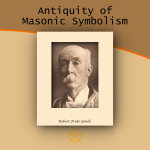 On the Antiquity of Masonic Symbolism Is the Symbolism of Masonry an inheritance derived from the old Masons who flourished before the era of the Grand Lodges (1717); or has it been borrowed from the Rosicrucians or others, after 1717? |
 Mason's Marks – from Egypt to Europe? Mason's marks have been a source of intrigue, not only to Freemasons but to historians and archaeologists. The use of simple pictograms have been employed for millennia by artisans to identify their work. But where did they originate and why? |
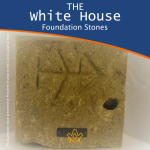 The White House Foundation Stones Further to the articles in our series on the history of the stone masons, we have a rather intriguing addition. During the 1950's renovation of the White House, President Truman retrieved more than 100 stone blocks with stonemasons marks. |
 What the Goose and Gridiron Tavern is in the ancient annals of London Freemasonry, The Green Dragon Tavern is to the memories of the Free-mason, of Boston and New England. |
 Auschwitz concentration camp: video photo article taken in 2013 |
 There are two things of importance happening this day - 27 January |
 Two approaches regarding the understanding of Freemasonry |
 Masonic Research in England c1930 An article which appeared in an American Masonic magazine, c1930 and which was reproduced in England, provoking a little controversy. |
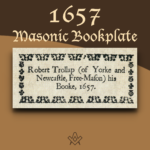 Masonic bookplates the ‘Brethren’s spiritual coats of arms and marks’ |
 The Unlawful Societies Act of 1799 Rebellious Freemasons and the 21st century |
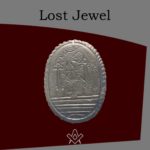 In 1912, Sarah Dowd of Dromore, Ireland, found a Masonic jewel dated 1517 - a date two hundred years before the establishment of Grand Lodge... |
 Freemasonry and Fascist Regime Interesting speech by the famous historian Prof. Aldo A. Mola, who links the fascist regime with the Masonic Associations. |
 Was famous Russian poet Alexander Pushkin a Freemason? And if so, was he a member of the lodge ‘for which all the lodges in Russia were destroyed’? |
 The Importance of Masonic Research Why is accurate - or authentic - Masonic research so important? The importance of making a daily advancement in Masonic knowledge is something that The Square is passionate about promoting. |
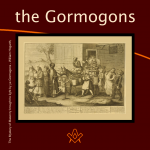 The Antient Noble Order of the Gormogons had a brief existence in the eighteenth century; they left few records or accomplishments, |
masonic knowledge
to be a better citizen of the world
share the square with two brothers

click image to open email app on mobile device
